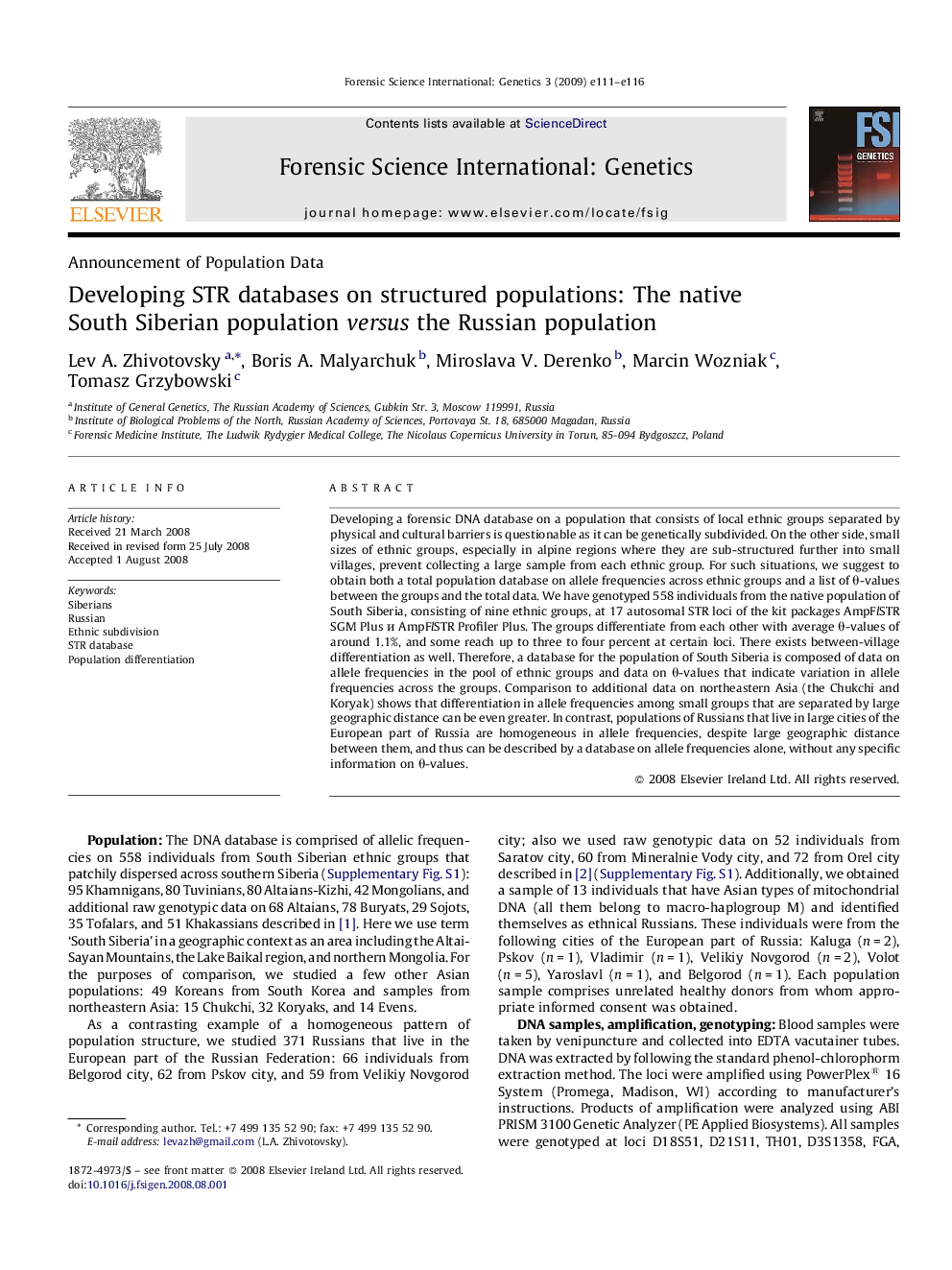| Article ID | Journal | Published Year | Pages | File Type |
|---|---|---|---|---|
| 99160 | Forensic Science International: Genetics | 2009 | 6 Pages |
Developing a forensic DNA database on a population that consists of local ethnic groups separated by physical and cultural barriers is questionable as it can be genetically subdivided. On the other side, small sizes of ethnic groups, especially in alpine regions where they are sub-structured further into small villages, prevent collecting a large sample from each ethnic group. For such situations, we suggest to obtain both a total population database on allele frequencies across ethnic groups and a list of θ-values between the groups and the total data. We have genotyped 558 individuals from the native population of South Siberia, consisting of nine ethnic groups, at 17 autosomal STR loci of the kit packages AmpFlSTR SGM Plus и AmpFlSTR Profiler Plus. The groups differentiate from each other with average θ-values of around 1.1%, and some reach up to three to four percent at certain loci. There exists between-village differentiation as well. Therefore, a database for the population of South Siberia is composed of data on allele frequencies in the pool of ethnic groups and data on θ-values that indicate variation in allele frequencies across the groups. Comparison to additional data on northeastern Asia (the Chukchi and Koryak) shows that differentiation in allele frequencies among small groups that are separated by large geographic distance can be even greater. In contrast, populations of Russians that live in large cities of the European part of Russia are homogeneous in allele frequencies, despite large geographic distance between them, and thus can be described by a database on allele frequencies alone, without any specific information on θ-values.
